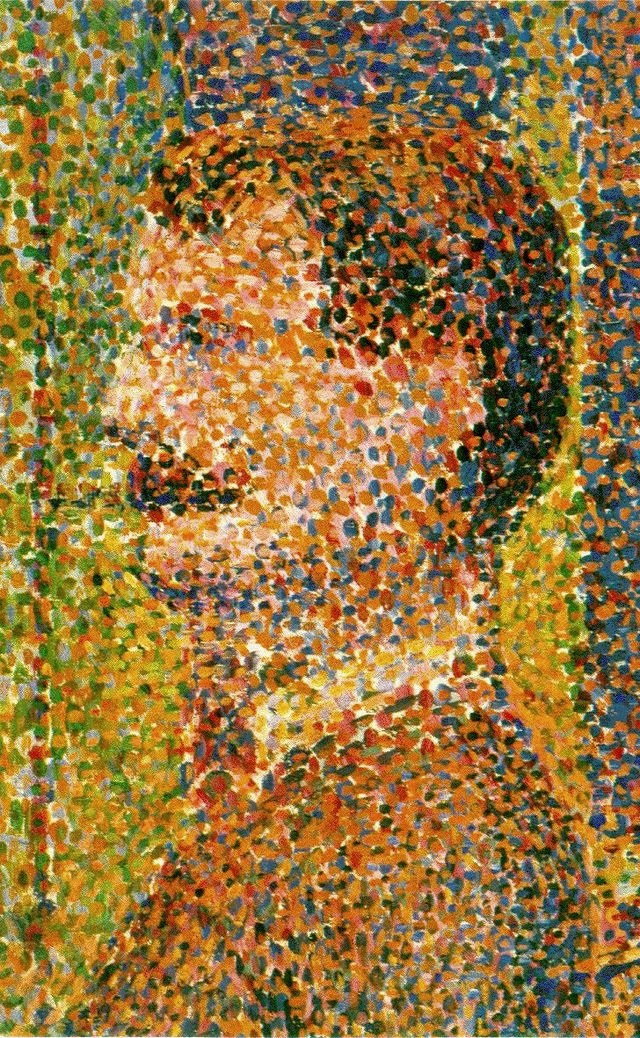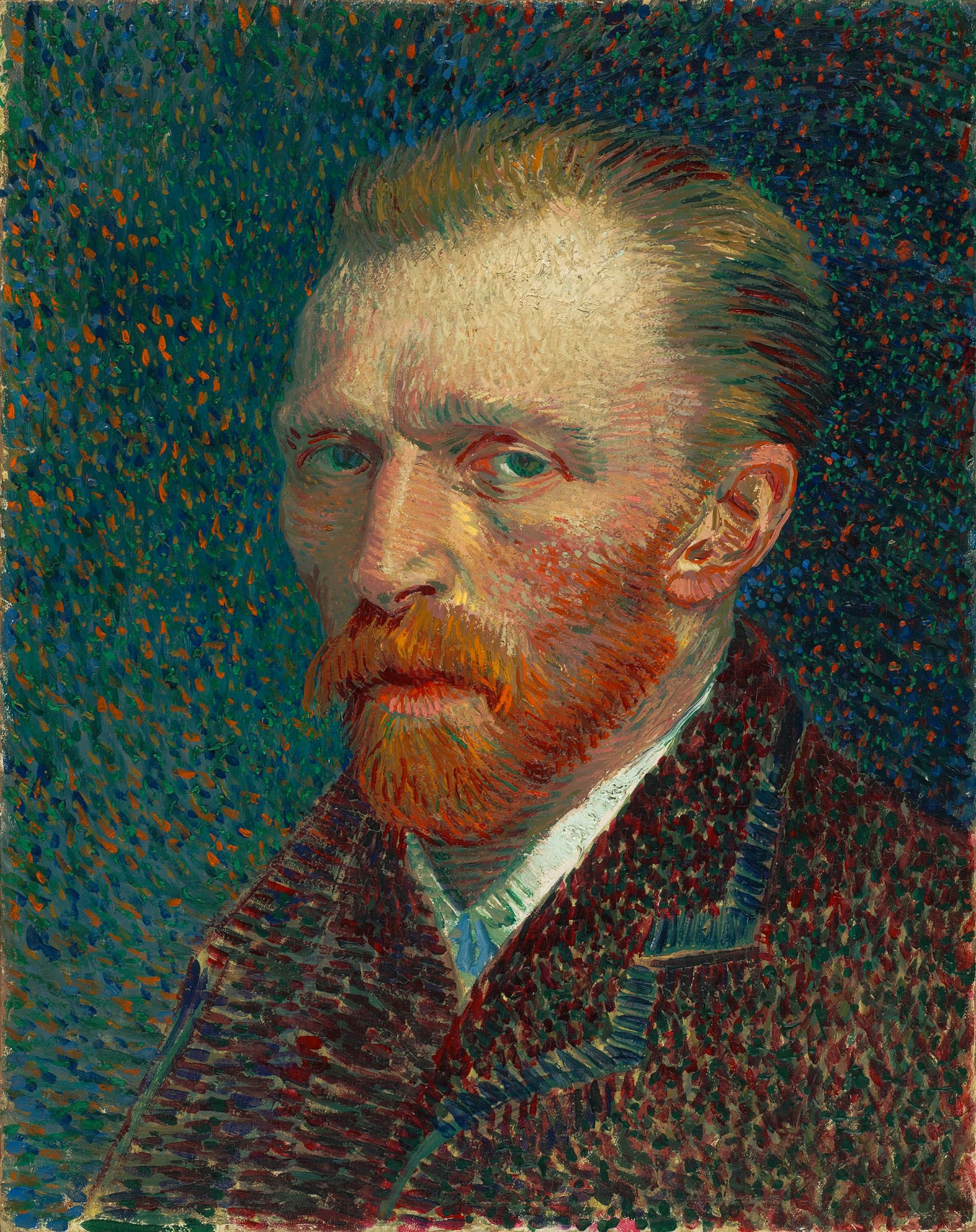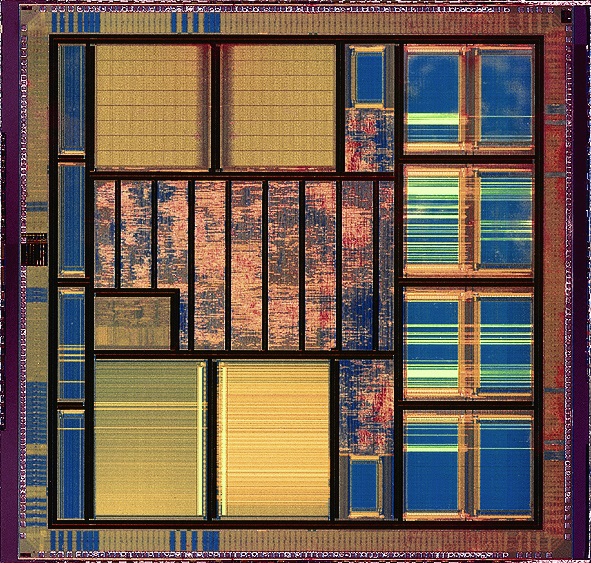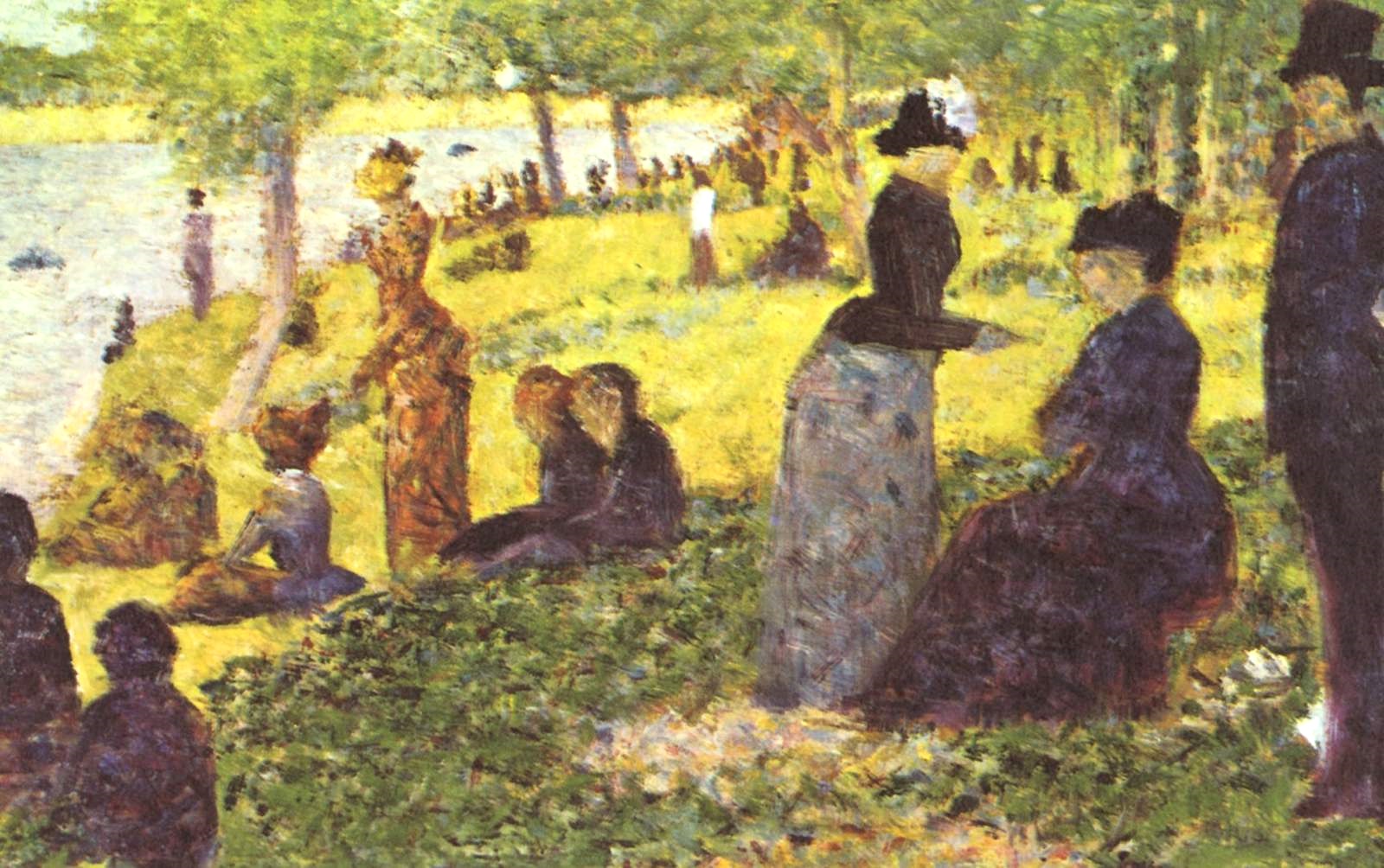Along with an extensive collection of paintings and sculptures, MoMA alos exhibits a library of historic cinema and television productions, as well as, objects of architectural interest.
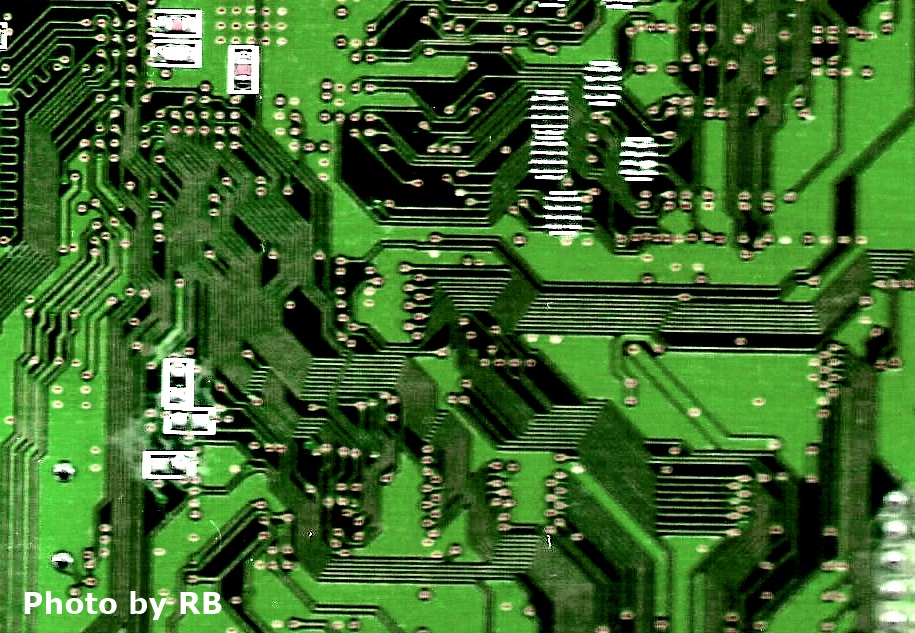
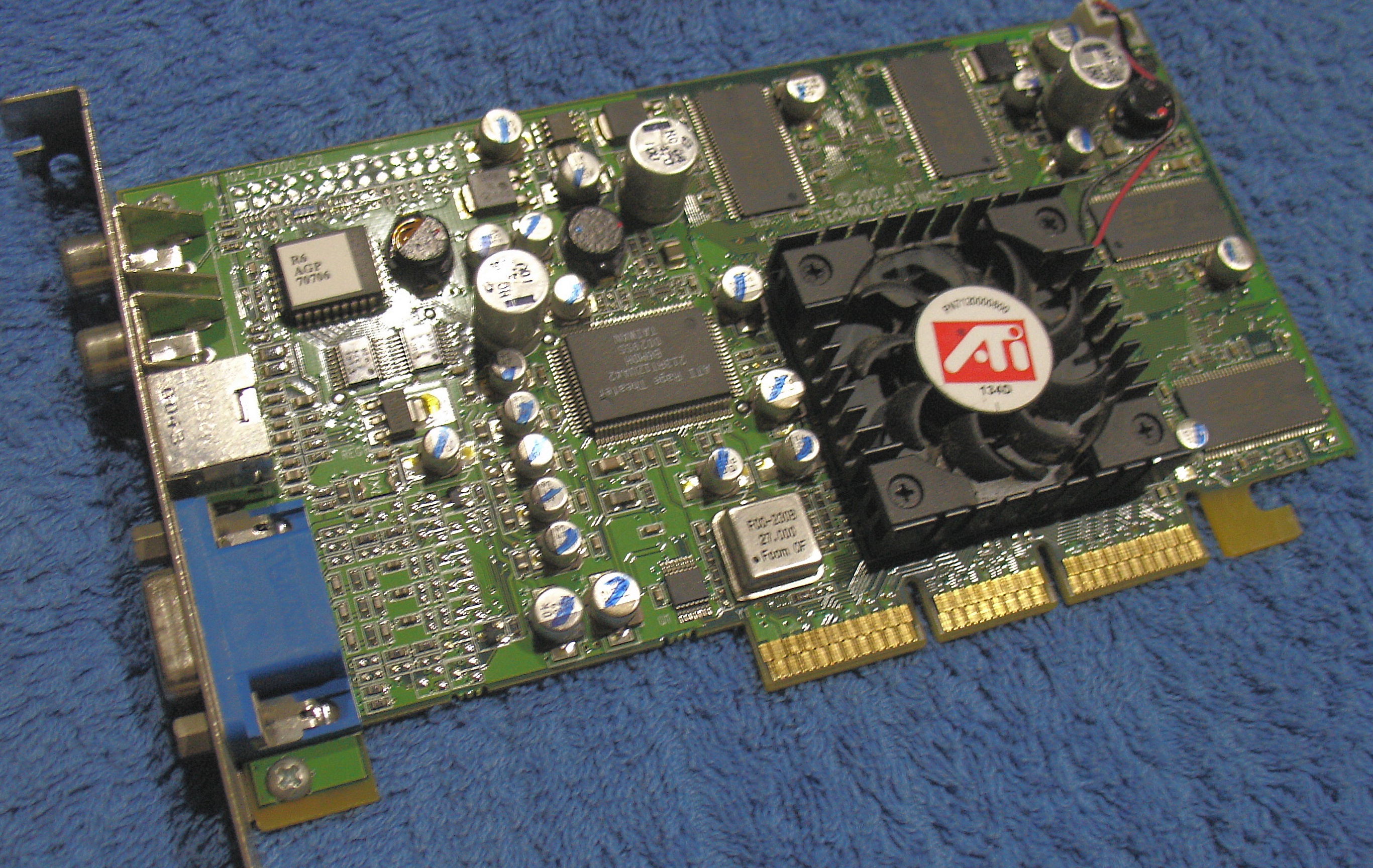 The inset shows the topside of an older ATI graphics card for a desktop computer. Individual components of the card are clearly visible. Note the cooling fan, which is necessary on nearly all modern graphics cards.
The inset shows the topside of an older ATI graphics card for a desktop computer. Individual components of the card are clearly visible. Note the cooling fan, which is necessary on nearly all modern graphics cards.
The photo on the right displays the bottom side of a printed circuit board (PCB) that has the function of "painting" an image on the monitor screen. PCBs have greatly helped to reduce the size of electronic equipment. The term "printed circuit" derives from use of photo-etching techniques used in newspaper, book, and magazine printing.
Wires between components in 1950s-era radio and television receivers filled much of the functional space in the device. In the 1960s, wires were replaced by thin copper traces, i.e. wires, that were printed or etched onto a thin copper sheet that was bonded onto one side of the printed circuit board. The green areas appearing in the photo above are electrical conductors, or wires. These patterns are quite functional, yet possess a kind of aesthetic form.
PCBs often have specific functions, for example: sound card, graphics card (video), and Ethernet cards (network). The board shown on the right is the bottom-side of a video card, or graphics adapter, whose gold-plated contacts are inserted into "slots" on a "motherboard", or "main board". Just about any machine, nowadays, that does something useful has a printed-circuit board, from radar sets and robots to washing machines and rice cookers.
Semiconductor chips represent a leap from wires printed on a printed circuit board to wires of microscopic dimensions formed on a thin wafer of silicon (SO2), wich is common sand, or quartz. Semiconductor chips are now constructed in "nanometer" dimensions:
Nine Zeros:
nanometers =
meters
Electromagnetic spectrum:
extreme ultraviolet and soft rays
Human vision can "see" electromagnetic wavelengths in the range 390nm–700nm (nanometers), which is a very, very narrow range of visible wavelengths within the range of all electromagnetic radiation. Some snakes see
longer wavelengths, infrared light>, while many species of insects see
shorter wavelengths, ultraviolet light. For more information about enlarging our range of vision, surf to
Beyond What Our Eyes Cannot See.
The microscopic dimensions of today's chips require much shorter wavelengths of "light" than what our eyes can see. Modern chip designs are so incredibly tiney, that very short wavelengths of extreme ultraviolet light or soft must be used for the "photo etching" cited in the manufacture of printed circuit boards. When viewed under a microscope, chips also reveal a form of artistic imagery.
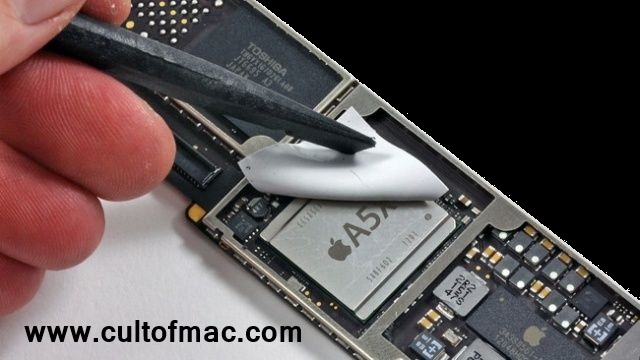 Topside view of Apple's A5X chip that was used as the central processing unit (CPU), the brain, in some iPads. Several Apple-designed chips were manufactured by Samsung of Korea. Ironically, these two titans of industry, despite being partners for years, have been locked in legal battles over reciprocal claims of patent infringement.
Topside view of Apple's A5X chip that was used as the central processing unit (CPU), the brain, in some iPads. Several Apple-designed chips were manufactured by Samsung of Korea. Ironically, these two titans of industry, despite being partners for years, have been locked in legal battles over reciprocal claims of patent infringement.
Because of the very small, microscopic scale of modern chip fabrication, chips can have many functional units. Most of the squares in the image (above) are functional units that perform specific tasks, while many of the thin lines are microscopic "wires". An Apple central processor chip (called a CPU, central processing uni) is shown on the right. Centrol processing units have many specialized circuits constructed on one square piece of silicon.
Art and Nature
 The irregular curves and bends of this tree defy the definition of a tree. Is it a tree, or is it a sculpture?
Can a tree be a work of art? We are familiar with the majesty of the Giant Red Wood trees in California or the graceful beauty of a weeping willow tree. The unusual tree shown here inhabits the grounds of the Cho-gyeh Sa Buddhist temple in the center of Seoul. Similar trees grow around the Pennisula and sell for tens of thousands of dollars.
The irregular curves and bends of this tree defy the definition of a tree. Is it a tree, or is it a sculpture?
Can a tree be a work of art? We are familiar with the majesty of the Giant Red Wood trees in California or the graceful beauty of a weeping willow tree. The unusual tree shown here inhabits the grounds of the Cho-gyeh Sa Buddhist temple in the center of Seoul. Similar trees grow around the Pennisula and sell for tens of thousands of dollars.
Art and Science
Pointillism is a late ninteenth-century artistic technique that forms color images by painting dots of dfferent colors and different sizes.
Georges-Pierre Seurat (1859–1891) was a draftsman and a French Post-Impressionist painter, who is credited with introducing the Pointillism technique, as well as several other innovations in the graphic arts. For more examples,
surf to the Wikipedia Pointillist Gallery
Conventional techniques build an image with continuous strokes of color, rather than dots of color. In modern parlance, the dots are called "pixels", or picture elements. One might say that conventional painting is "analog" and pointillist painting is "digital".
We can comfortably guess that Seurat had no idea that 100 years ahead, the realm of forming images would be using the same technique. Color photographic film forms images with highly dense arrangements of very small grains of colored dyes. The color computer monitor on which you are reading this paragraph forms images from grouping three tiny dots of red, green, and blue light into one composite of the three primary colors. Blending these three primary colors can create millions of colors of the rainbow. Perhaps, we can speculate that art predicted future technologies.
An Aside:
A few words about pixels and dots deserve mention here. When we look at a photograph printed on a sheet of paper, we can see tiny "dots". Normally sighted people can see the dots with a magnifying glass. To produce a colored dot, three or more layers of ink are impressed onto each dot to produce the colored dot.
Television displays and computer monitors, however, display one big dot that is composed of three smaller dots; the three smaller dots each display a single color: red, green, or blue; combining these three primary colors gives us white. These smaller dots are called "pixels". Pixels form dots. Note the difference in dthe texture between two pointillist paintings: large dots = low resolution; more dots = higher resolution. In the days of film photography, "grain size" was the descriptive word; in the lingo of digital photography, the descriptive word for degree of coursnace is "resolution".
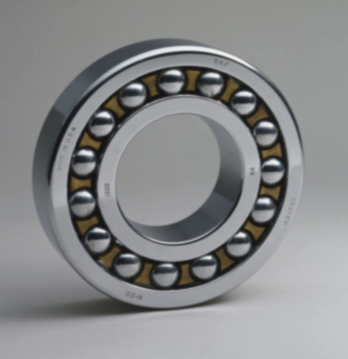
.jpg)



